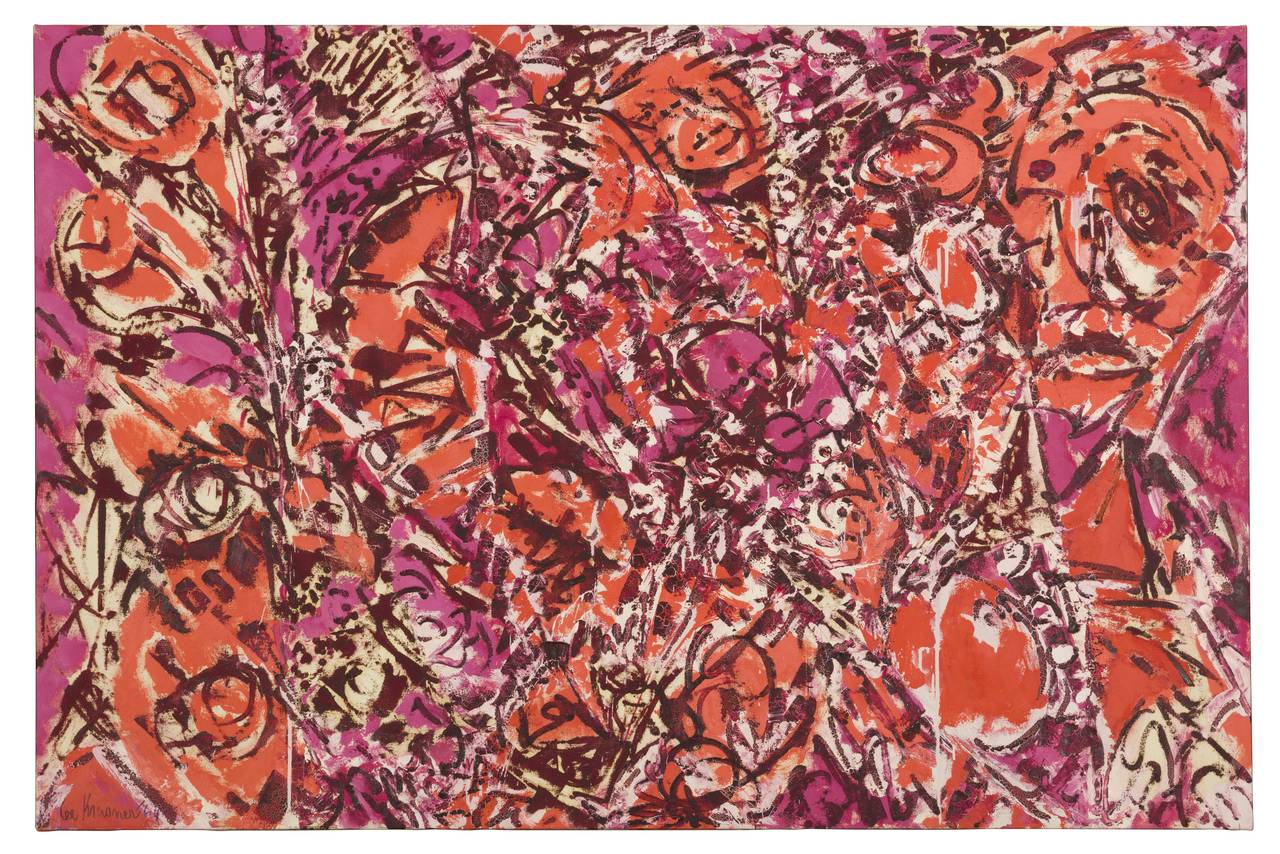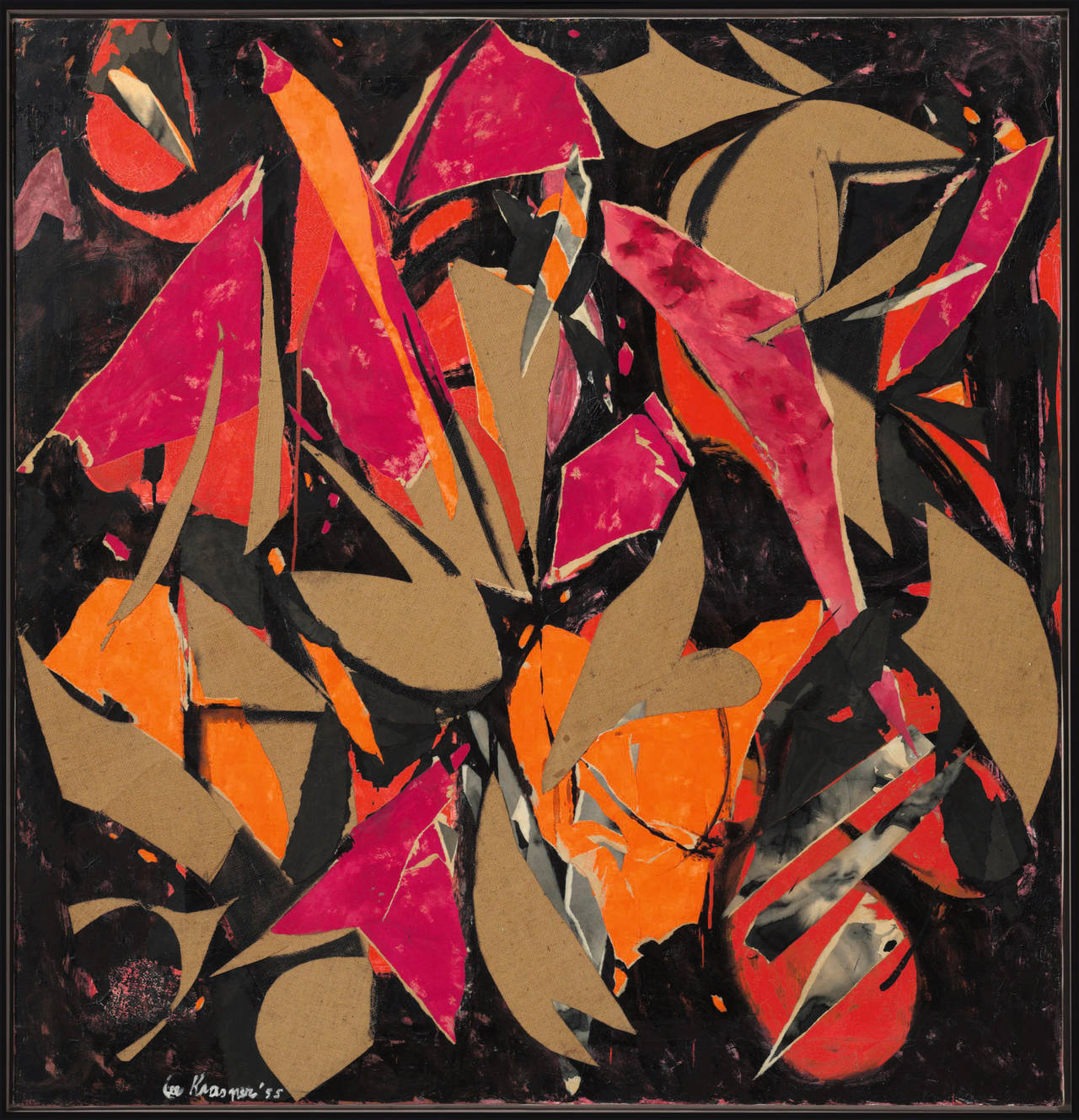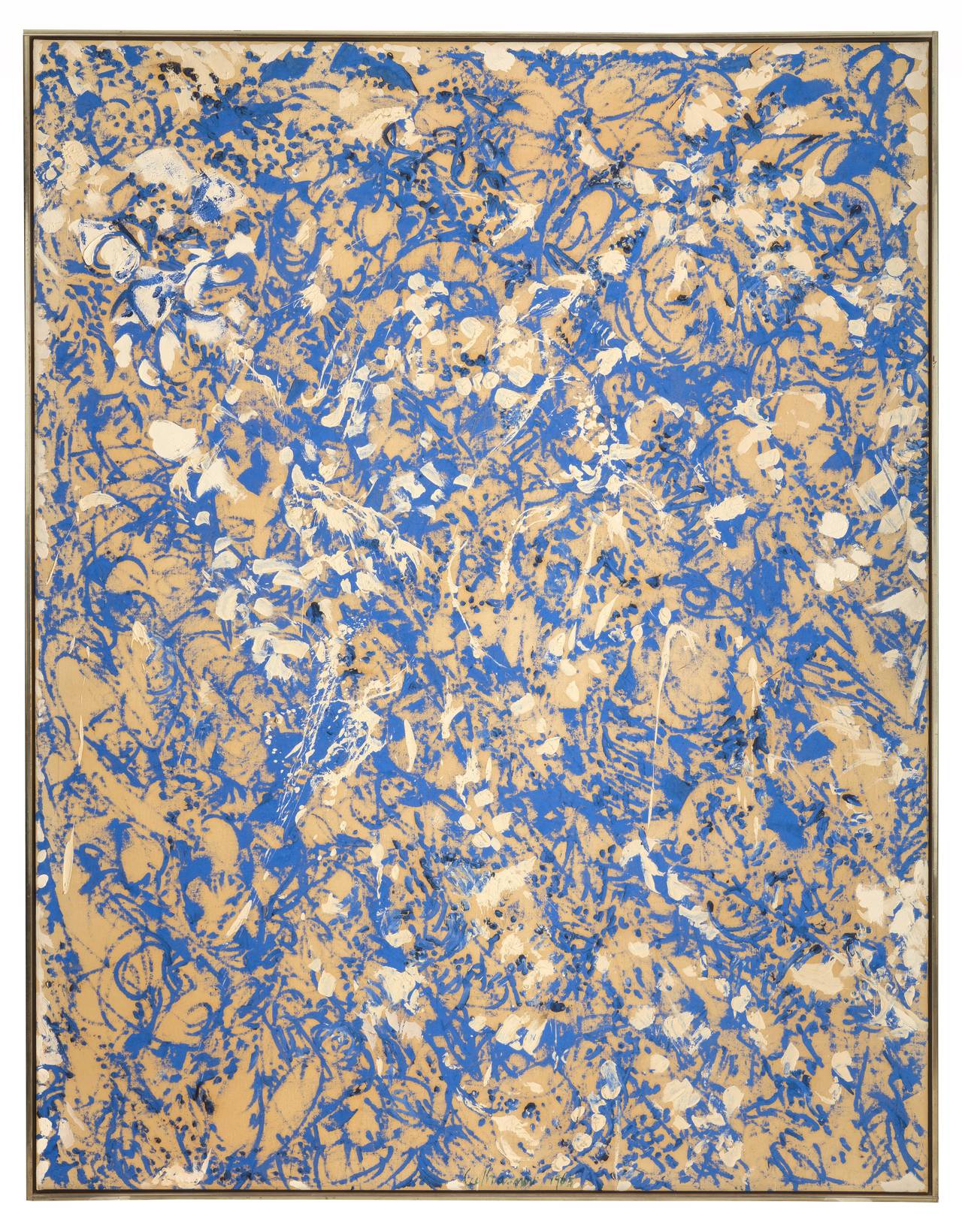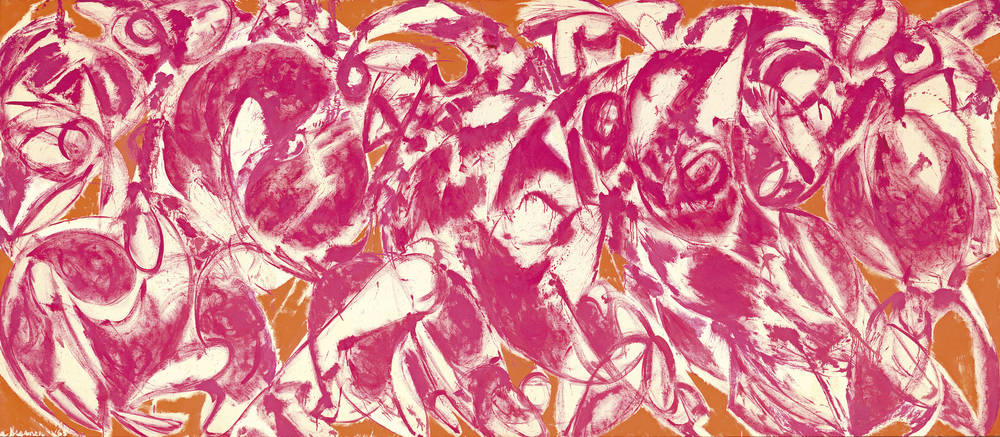Before her last large retrospective opened at the MoMA in New York, Lee Krasner died. Today, her outstanding estate is managed in the heart of Chelsea.
I’m on my way to Chelsea or more precisely to Kasmin Gallery, the final stop on my search for Lee Krasner in New York and the gallery who was appointed to govern her estate in 2016. Lee’s career finally picked up steam in the 1960s. She traveled to Europe to secure a European market for Pollock’s work, but also to show her own pieces. In 1965, she finally had her very first retrospective at Whitechapel Gallery in London. Though the press was raving, a lot of her success was still linked to her relationship to Pollock, this would drastically change in the 1970s. With the upcoming second wave of feminism, Lee’s work was pushed forward and right into the spotlight. Though she was never comfortable with being called a feminist or female artist, she also credited her final breakthrough to the women’s movement.
It is also in the 1970s that she started a new series of cannibalistic collages, similar to a phase she had in the early 1950s, where she cut out old drawings from her time at Hans Hoffmann and used them to create something new. And she got her first major exhibition at one of the New York Museum’s, The Whitney, in 1973. Around the same time fame finally kicked in, her health is starting to deteriorate and all she really wanted is a retrospective exhibition in New York where she was born and raised. She wanted a retrospective at the Museum of Modern Art.



I meet Eric Gleason, director at Kasmin Gallery, at the front desk. Kasmin has three different buildings at the corner of 10th Avenue and 27th Street right in the heart of the Chelsea arts district. They’re one of the first bigger galleries who made the move up from Soho. We settle in one of the back rooms with a delicate coffee table and no windows. “We're the representatives of Krasner’s legacy: from an artistic standpoint, from a historic standpoint, and from a market standpoint,” Gleason explains. Not only was he there when Kasmin took over Krasner as an artist, he is also a huge fan.
At the beginning of 1980 it all started to come together: the press raved about her solo shows, the first awards were getting in, prices got up, and a plan was set in motion to organize a retrospective in the US, starting from a curator in Washington, DC and moving on to the Museum of Fine Arts in Houston when Barbara Rose, art critic and a friend of Lee, took over. On the 27th of October 1983, Lee’s 75th birthday, the first ever retrospective of Lee Krasner’s work in the US opened, including 152 paintings and drawings, with the perspective of traveling to the San Francisco MoMA and finally the Museum of Modern Art in New York. Unfortunately, Lee dies on June 19, 1984 before the retrospective reached New York in December the same year. She is one of only five women to date who had a retrospective at the MoMA. She left her over $10 Mio estate to the Pollock Krasner Foundation, founded right after her death, to support struggling artists.

Since the Pollock Krasner Foundation announced Kasmin Gallery as the successor of the Robert Miller Gallery to govern Lee’s work, they have been busy organizing two solo shows – one for her umber paintings and one for a series of sketches she did for a WPA mural – and putting together pieces for the current retrospective at the SCHIRN. But there is one work that remained at Kasmin, “If you want to, I could show it to you right now?” Gleason says. Of course, I want to. He gets up and leads me through a labyrinth of hidden hallways that connects the three gallery spaces into a basement room filled with various paintings and sculptures by the artists they represent. Suddenly, there is it: a large-scale painting, brimming with energy, making me choke on my own thoughts. I feel strangely connected to Lee, again, to her struggles and her triumphs, all almost palpable on the canvas stretching out in front of me.









